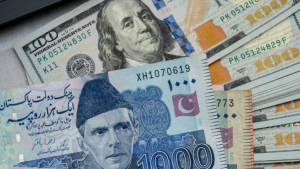[ad_1]
BEIJING (Reuters) – China’s Chang’e-6 lunar probe landed on Tuesday in the northern Chinese region of Inner Mongolia, making the country the first to bring back samples from the moon’s far side.
The reentry capsule touched down at 2:07 p.m. Beijing time (0607 GMT), according to state broadcaster CCTV, carrying lunar soil collected earlier in the month by the probe after a successful landing on the moon’s South Pole-Aitken Basin, an impact crater on the side of the Moon that always faces away from Earth.
Soon after the capsule landed, Zhang Kejian, head of the China National Space Administration, announced the successful completion of the Chang’e-6 lunar mission. Chinese President Xi Jinping said the mission’s completion was a “landmark achievement” in China’s quest to become a space and scientific powerhouse.
The Chang’e-6 probe was launched on May 3 on a Long March 5 rocket from the Wenchang Satellite Launch Center on the southern island of Hainan. The samples will be transported by air to Beijing for analysis, according to CCTV.
While it is yet not known whether the planned 2kg of samples were successfully returned, whatever the amount, the samples will be closely analyzed by Chinese and foreign scientists, who believe that they will reveal new details about the formation of the Earth, moon, and solar system.
Samples from the Chang’e-5 mission, which brought back lunar samples from the near side of the moon, led to the discovery of new minerals and more accurate ranges for the moon’s geological age.
The success of the Chang’e-6 mission could give China’s lunar and space exploration program, already in close competition with the United States, greater pull among foreign governments and scientists.
The Chang’e 6 lunar probe and the Long March-5 Y8 carrier rocket combination sit atop the launch pad at the Wenchang Space Launch Site in Hainan province, China.
China’s retrieval of samples from the moon’s far side comes as the exploration of lunar resources and the militarization of space are becoming increasingly pressing questions shaped by geopolitical tensions.
[ad_2]
Source link





